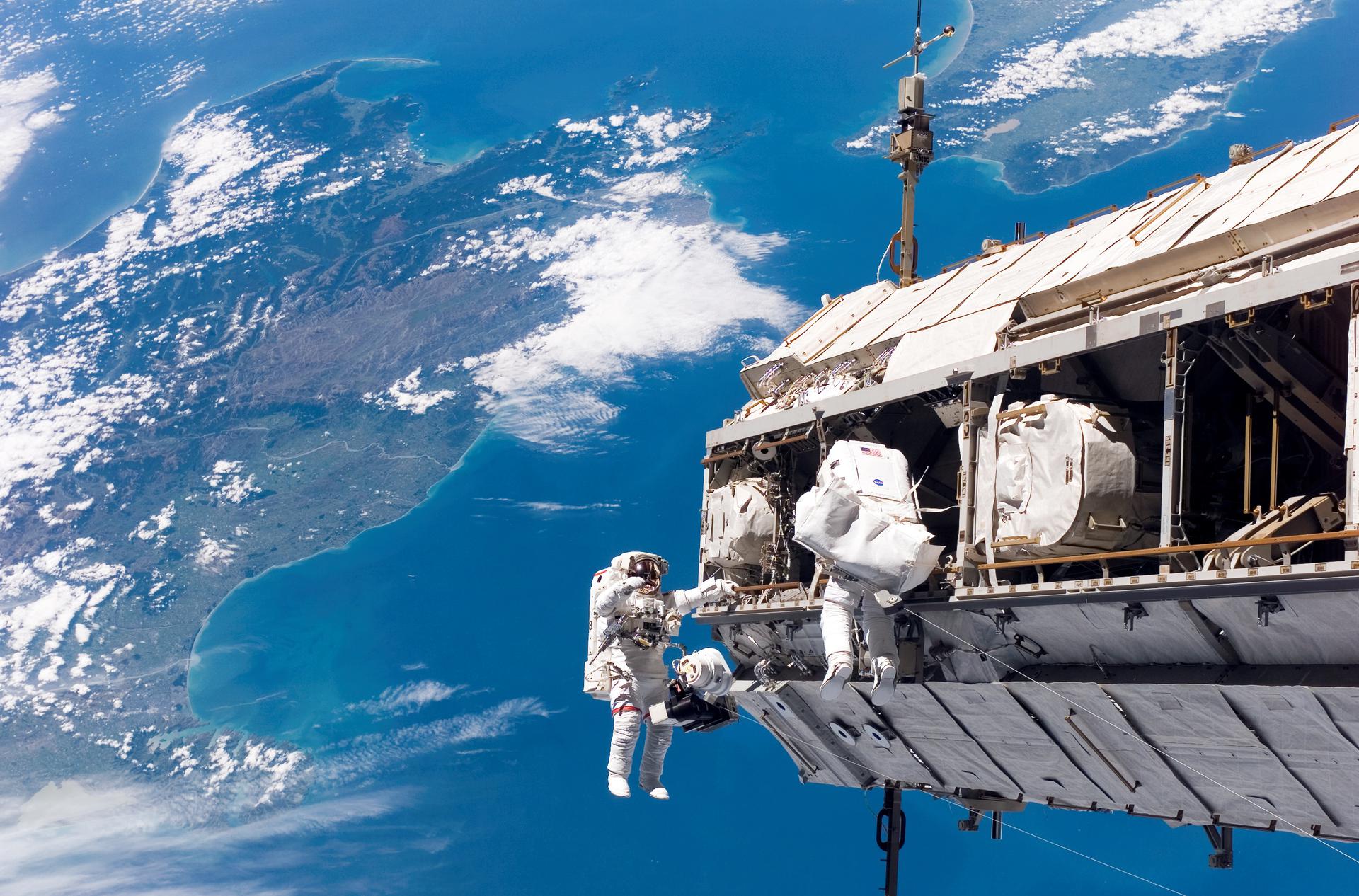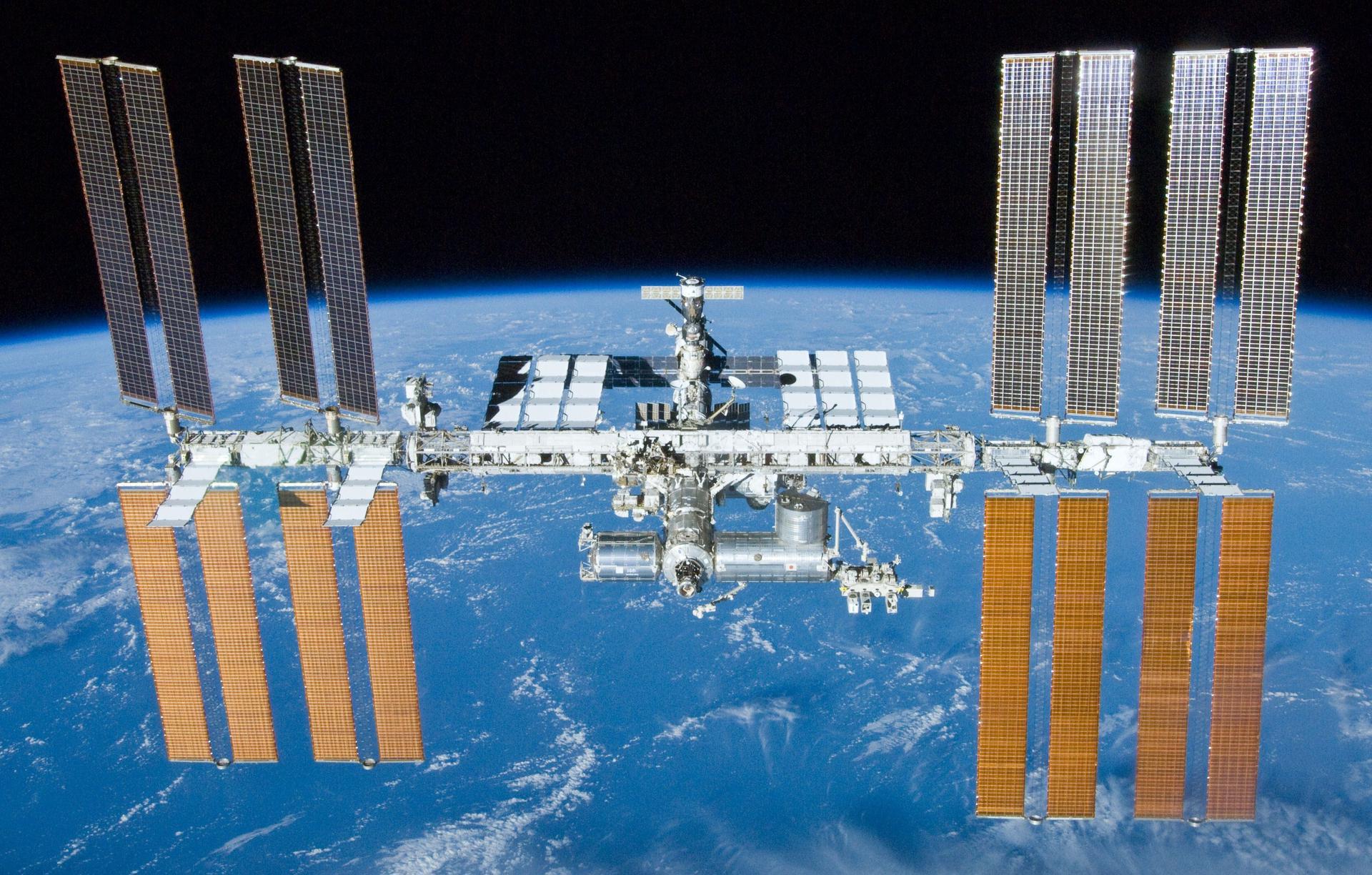
EVA
US EVA-71
International Space Station International Space Station Expedition 64
On Sunday, Feb. 28, NASA astronauts Kate Rubins and Victor Glover will step out of the space station to begin assembling and installing modification kits required for upcoming solar array upgrades. The current solar arrays are functioning well, but have begun to show signs of degradation, as expected, as they were designed for a 15-year service life. The first pair of solar arrays were deployed in December 2000 and have been powering the station for more than 20 years. Later this year, the new solar arrays will be positioned in front of six of the current arrays, increasing the station’s total available power from 160 kilowatts to up to 215 kilowatts. Rubins will be extravehicular crew member 1 (EV 1) wearing red stripes. Glover will be extravehicular crew member 2 (EV 2) and wear a suit with no stripes.
Related Information

International Space Station
Low Earth Orbit Government Founded: Nov. 20, 1998 Mass: 419.7T Volume: 931 m³
Status - Active
The International Space Station (ISS) is a space station, or a habitable artificial satellite, in low Earth orbit. Its first component was launched into orbit in 1998, with the first long-term residents arriving in November 2000. It has been inhabited continuously since that date. The last pressurised module was fitted in 2011, and an experimental inflatable space habitat was added …
Falcon 9
Dror-1
Space Launch Complex 40 - Cape Canaveral SFS, FL, USANote: SpaceX identifies the mission as "Commercial GTO 1". Dror-1 is a geostationary communication satellite built and developed by Israel Aerospa…
Falcon 9
Starlink Group 10-28
Space Launch Complex 40 - Cape Canaveral SFS, FL, USAA batch of 28 satellites for the Starlink mega-constellation - SpaceX's project for space-based Internet communication system.
Soyuz 2.1a
Progress MS-31 (92P)
31/6 - Baikonur Cosmodrome, Republic of KazakhstanProgress resupply mission to the International Space Station.
Long March 4C
Shiyan 28 B-01
Launch Complex 3 (LC-3/LA-1) - Xichang Satellite Launch Center, People's Republic of ChinaSatellite officially named for "space environment detection" purposes, exact details unknown.
Falcon 9
Starlink Group 10-25
Space Launch Complex 40 - Cape Canaveral SFS, FL, USAA batch of 27 satellites for the Starlink mega-constellation - SpaceX's project for space-based Internet communication system.
Falcon 9
MTG-S1
Launch Complex 39A - Kennedy Space Center, FL, USASecond of EUMETSAT's third generation of weather satellite.
New Shepard
NS-33
West Texas Suborbital Launch Site/ Corn Ranch - Corn Ranch, Van Horn, TX, USANS-33 is the 13th crewed flight for the New Shepard program and the 33rd in its history.
Falcon 9
Starlink Group 15-7
Space Launch Complex 4E - Vandenberg SFB, CA, USAA batch of 26 satellites for the Starlink mega-constellation - SpaceX's project for space-based Internet communication system.
H-IIA
GOSAT-GW (Ibuki GW)
Yoshinobu Launch Complex LP-1 - Tanegashima Space Center, JapanGOSAT-GW (Greenhouse Gases Observing Satellite Greenhouse gases and Water cycle), also known as Ibuki GW and formerly known as GOSAT 3, is JAXA's nex…
Electron
Symphony In The Stars
Rocket Lab Launch Complex 1B - Rocket Lab Launch Complex 1, Mahia Peninsula, New Zealand'Symphony In The Stars' is the first of two dedicated missions on Electron to deploy a single spacecraft to a 650km circular Earth orbit for a confid…

